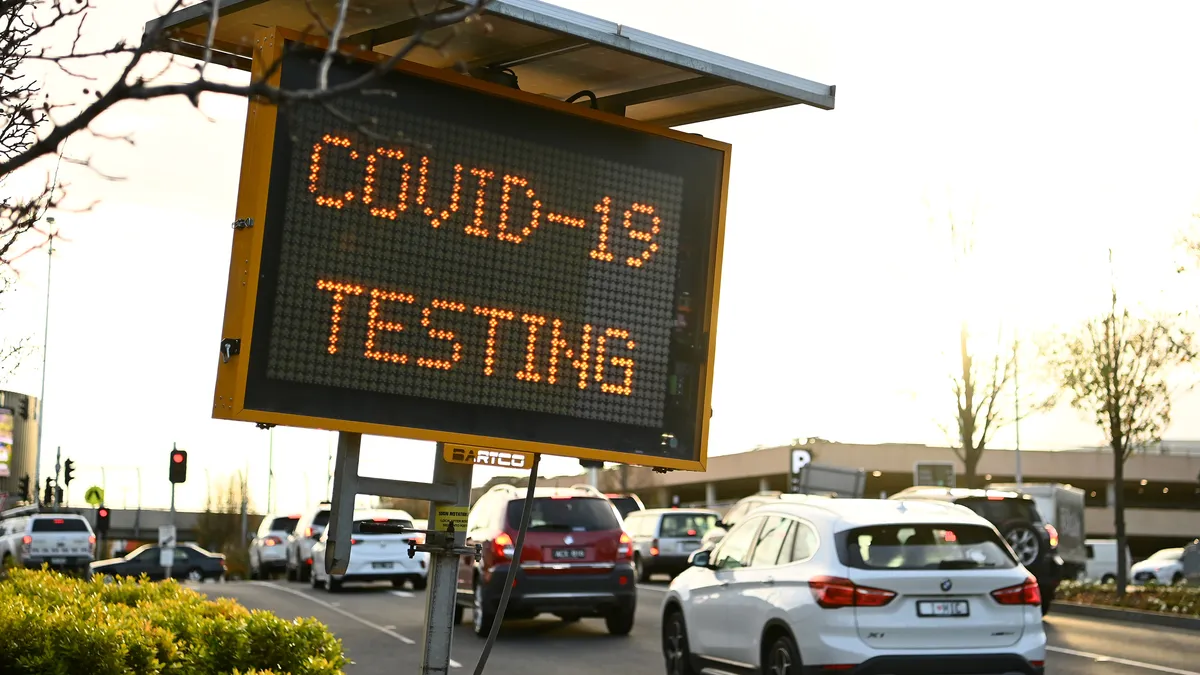Dive Brief:
- Under-resourced schools are about half as likely to implement regular COVID-19 testing this fall, according to a nationally representative survey of 200 administrators and principals conducted in June by Thermo Fisher Scientific. While 63% of administrators with access to adequate resources report planning to screen in fall, only 30% of under-resourced schools report the same.
- This gap is mirrored in plans for summer school, with 66% of administrators from schools with more resources saying they are implementing testing for summer programs, compared to 34% of those with fewer resources.
- Though 75% of administrators overall think testing is important to maintain safety in schools, about 50% plan to do so at the start of the upcoming school year, and 21% remain undecided. Of those testing, 80% plan to continue doing so even after a vaccine becomes available for students ages 2-11.
Dive Insight:
Last week, the Centers for Disease Control and Prevention released much-anticipated COVID-19 school guidance for the upcoming year, recommending a full return in the fall with safety precautions in place that include face coverings for unvaccinated those ages 2 and older and three feet of social distancing. In absence of social distancing, schools are still advised to reopen in-person five days a week with additional safety precautions in place, including COVID-19 testing.
"The new CDC guidance makes it clear that regular testing should be a part of every school’s safety plan, and we believe more schools will choose to test as a result, particularly with the availability of funding," said a spokesperson from Thermo Fisher Scientific, which provides COVID-19 testing programs for schools, in an email. According to its results, 79% of districts that plan to test are applying for the $10 billion in federal funds from the American Rescue Plan meant to support in-school testing and reopening.
The U.S. Department of Education has repeatedly urged schools to invest part of their federal aid from the ARP toward implementing safety precautions, among other things, and to fully return to school buildings in the fall. The federal agency has also maintained that districts should have enough access to partial funds — with some being withheld until states submit and get approval for their ARP plans — to both reopen in some capacity and begin addressing social-emotional and academic deficits accrued over the COVID-19 pandemic.
“We’ve seen a variety of factors influence districts’ decisions about whether to test, including access to adequate staff and testing wariness in the local market," the spokesperson added.
District leaders and education finance experts have also voiced concerns that federal aid funding by itself is not enough to sustain districts' spending on personal protective equipment, testing and additional recovery efforts through the next few years.
While top officials have routinely touted the billions of dollars dispersed from ARP funds, some districts have reportedly not received more than a few hundred dollars for PPE from the package despite thousands of enrolled students, according to estimates from Whiteboard Advisors. Some areas have received no funding at all from the third pot of money.













